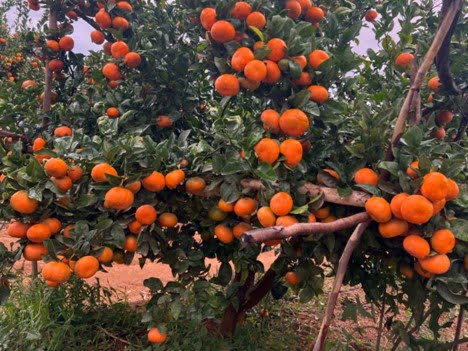An absolute record temperature of 50.4 degrees Celsius was recorded in Morocco last Friday, accompanied by “Chergui”, hot, dry winds from the Great Sahara, sandstorms, and wildfires. The impact on crops is significant with widespread areas lost to sunburns, but citrus will be fine according to Mouad Hfa, production manager of Pro Prim.
Mouad told FreshPlaza: “Heat waves are a big concern for us, as they are always followed by chergui, and if they coincide with the citrus flowering phase, they intensify physiological falls and fruit abortion, and the damage can be very significant.”
The grower continues, “However, despite the recent heatwave being extreme, breaking all records, and exceeding 50 degrees where we produce, we are lucky that flowering has already taken place as early as March and April. The fruit is also in the process of growing and grading. The impact is therefore minimal, given that citrus fruits are heat-resistant. There could be consequences in terms of quality, with marbling and dry fruits, but that’s something we won’t be able to assess right away. And it’s all the more unlikely as we anticipated the heatwave by intensifying irrigation.”
According to another industry source, the extent of damage caused by the heatwave among certain producers who are currently in the flowering phase does not exceed 5% of volumes.
Mouad assures that the current season will mark the recovery of the citrus industry in Morocco after a difficult season marked by drought. He explains: “Aggregated data from all the growers in the region show that the next season will be much better than the last, and the figures speak for themselves. We expect up to 30% more Nadorcott than last year, over 20% more oranges, and over 10% more volumes of other varieties such as clementines, navels, and Maroc Late.”
The grower concludes: “Quality will also be better than last year, with better sizes for all varieties, and phytosanitary conditions under control.”
The use of the site materials is free if there is a direct and open for search engines hyperlink to a specific publication of the East-Fruit.com website.




